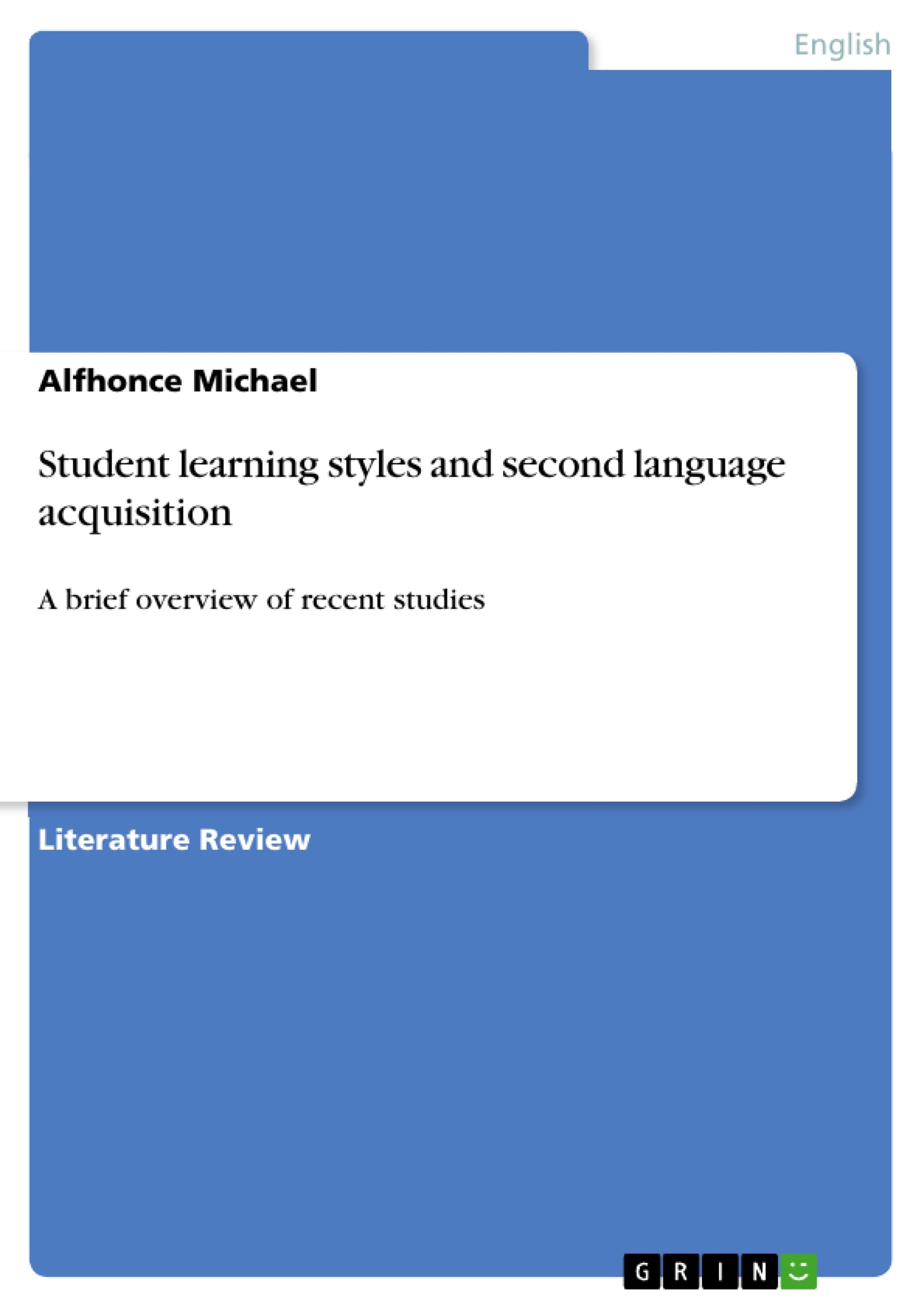Student learning styles and second language acquisition is a sensible process where one learns of another language than of his or her first language. This process takes place after one has already gained the first language. Therefore, when studying the second language the learner can also find the language to be the third, forth or fifth in his or her studies. The first language is the first language a person learns immediately after he or she is born. Caregivers or parents that surround an individual when he or she is born mostly teach this language. Like the second language, learning one can also have more than one language at the same time.
The author gives a brief overview on 11 recent studies on the subject.
Inhaltsverzeichnis (Table of Contents)
- Student learning styles and second language acquisition
- Piper, T. (2011). And then there were two: Children and second language learning.
- Purpura, J. E. (January 01, 2016). Second and Foreign Language Assessment.
- Georgetown University Round Table on Languages and Linguistics, & Alatis, J. E. (2010). Linguistics, language teaching, and language acquisition: The interdependence of theory, practice, and research.
- Griffiths, C., & İnceçay, G. (June 01, 2016). Styles and Style-Stretching: How are They Related to Successful Learning?.
- Mirzaee, S., & Maftoon, P. (December 01, 2016). An examination of Vygotsky's socio-cultural theory in second language acquisition: the role of higher order thinking enhancing techniques and the EFL learners' use of private speech in the construction of reasoning.
- VanPatten, B., & Williams, J. (2015). Theories in second language acquisition: An introduction.
- Butler, Y. G., & Hakuta, K. (January 01, 2008). Bilingualism and Second Language Acquisition.
- Brown, H. D. (2007). Principles of language learning and teaching.
Zielsetzung und Themenschwerpunkte (Objectives and Key Themes)
This work examines the relationship between student learning styles and second language acquisition. It explores how individual learning preferences, cognitive processes, and strategies influence the success of learners in acquiring a new language.
- The influence of learning styles on second language acquisition.
- The role of cognitive strategies in language learning.
- The impact of affective variables on second language success.
- The importance of understanding individual learner differences.
- The application of various theories and research findings in the field of second language acquisition.
Zusammenfassung der Kapitel (Chapter Summaries)
- This chapter introduces the concept of second language acquisition and highlights the importance of understanding individual learning styles and differences. It explores how factors like affective variables, learning strategies, and cognitive processes influence the success of learners in acquiring a new language.
- This chapter delves into the significance of understanding individual learning styles in second language acquisition. It examines how teachers can utilize knowledge about different learning styles to create more effective learning environments.
- This chapter emphasizes the importance of language learning strategies and how they impact the effectiveness of learning. It discusses different types of strategies, including cognitive, memory, metacognitive, and affective strategies, and their role in successful language acquisition.
- This chapter explores the cognitive model of learning and how it applies to language acquisition. It highlights the role of working memory, long-term memory, and short-term memory in information processing and retention during language learning.
- This chapter examines Vygotsky's socio-cultural theory and its implications for second language acquisition. It explores the role of private speech and higher-order thinking techniques in the development of reasoning and language proficiency.
- This chapter offers a broader perspective on theories in second language acquisition, providing an overview of different approaches and perspectives. It discusses the significance of memory strategies and the use of various techniques for memorization and information retrieval.
- This chapter focuses on the comprehensive strategy and its application in second language acquisition. It explores how learners utilize guessing, replacement, and other techniques to overcome gaps in their knowledge and understanding.
- This chapter introduces the metacognitive strategy and its role in language learning. It highlights how learners can effectively evaluate, plan, and manage their learning processes.
- This chapter explores the use of corpora in language teaching and learning. It discusses the advantages of focusing on frequently used words and the benefits of corpora for vocabulary development and language learning.
Schlüsselwörter (Keywords)
This work focuses on student learning styles, second language acquisition, cognitive strategies, affective variables, individual differences, language learning theories, memory strategies, metacognitive strategies, and the use of corpora in language teaching.
- Quote paper
- Alfhonce Michael (Author), 2017, Student learning styles and second language acquisition, Munich, GRIN Verlag, https://www.grin.com/document/369020



